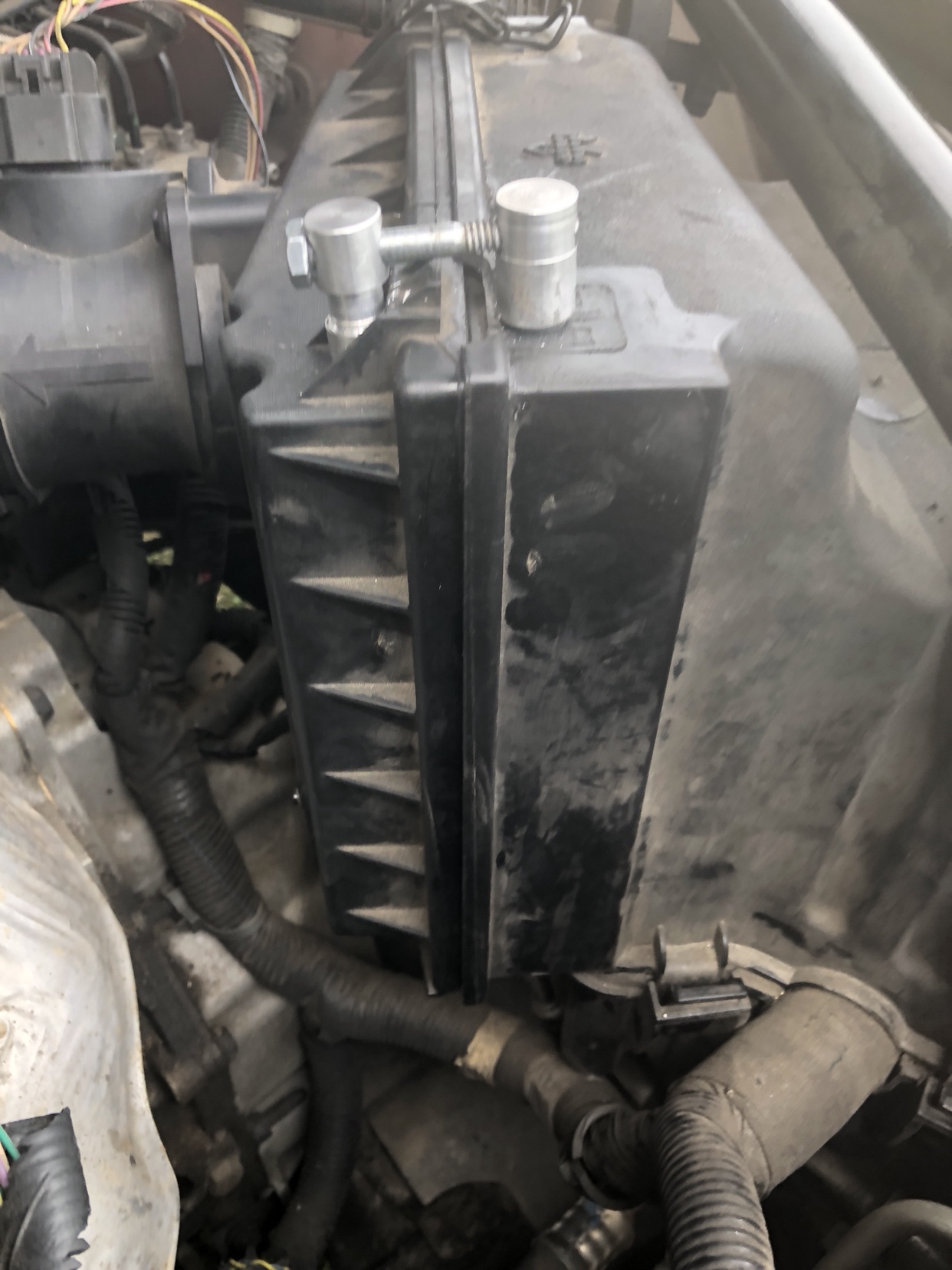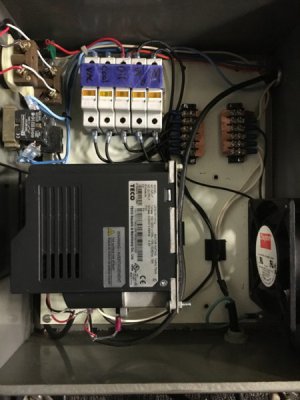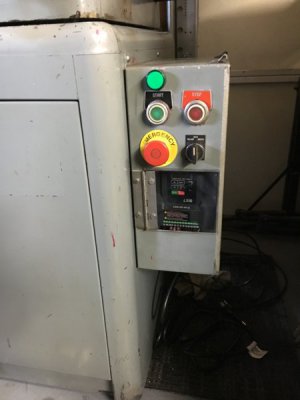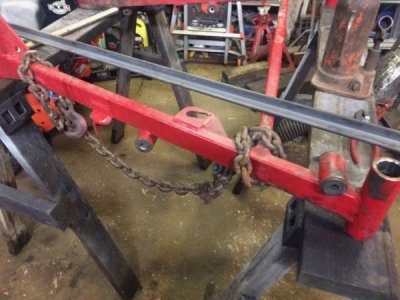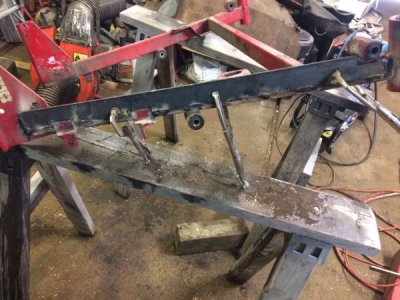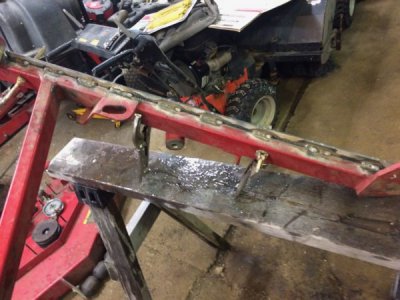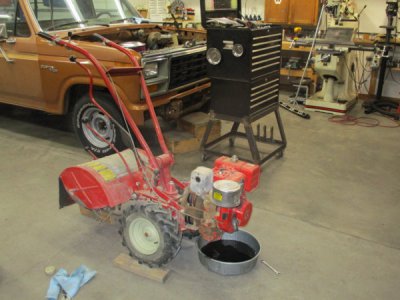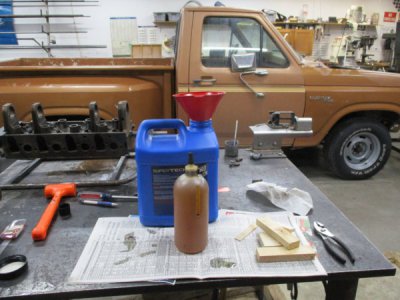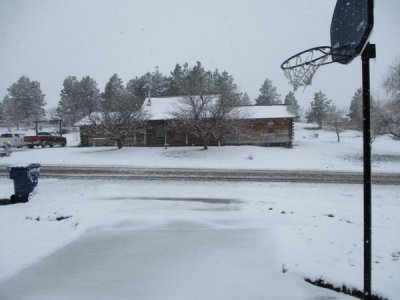Finished up this project (from https://www.hobby-machinist.com/thr...you-make-in-your-shop-today.67833/post-577772)
I shorted the frame a bit (cut off the end of the frame, moved the bagger, rear wheels and handlebars forward about 4"), and welded in a crossmember to stiffen up the frame a little.
Made a frame for holding an extension tube to the top of the bagger. This tube is used for vacuuming up harder to reach areas or where you don't want to just vacuum everything up (for example, to vacuum up the leaves on wood chips in a flowerbed). It hooks up to the short hose off the input to the blower.
Used the remnant of the old vacuum output I made (the one pointing straight up) as it's about the right diameter) to bend the two arms, then welded on cross members and some braces to stiffen it up. And did actual machining on the lathe, made some washers out of 1/8" sheet metal to hold the frame off the plastic bagger housing a little (3/8" washers or fender washers just didn't seem the right size to me)
The two end pieces of the frame:
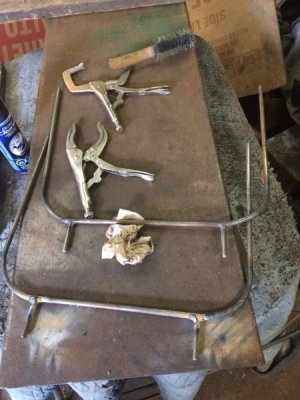
I made the washers by cutting the sheet metal into small squares, drilling a 3/8" hole through the middle, bolting all 4 of them together, and then chucking 2 nuts on the bolt in the lathe, and turning all 4 pieces down to size. Couldn't go too fast, otherwise they would spin, but it didn't take too long:
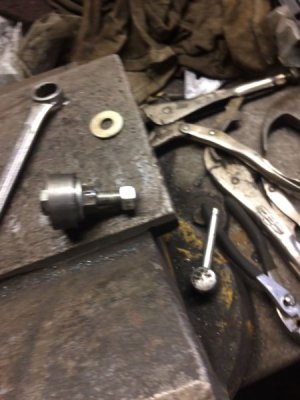
Result, 4 washers:
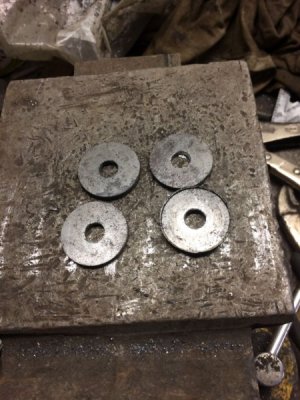
Final result:
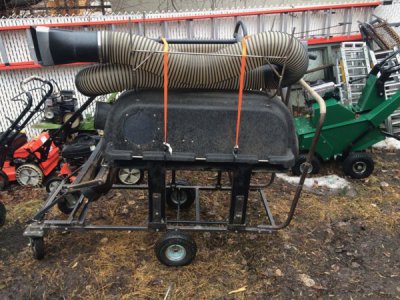
I shorted the frame a bit (cut off the end of the frame, moved the bagger, rear wheels and handlebars forward about 4"), and welded in a crossmember to stiffen up the frame a little.
Made a frame for holding an extension tube to the top of the bagger. This tube is used for vacuuming up harder to reach areas or where you don't want to just vacuum everything up (for example, to vacuum up the leaves on wood chips in a flowerbed). It hooks up to the short hose off the input to the blower.
Used the remnant of the old vacuum output I made (the one pointing straight up) as it's about the right diameter) to bend the two arms, then welded on cross members and some braces to stiffen it up. And did actual machining on the lathe, made some washers out of 1/8" sheet metal to hold the frame off the plastic bagger housing a little (3/8" washers or fender washers just didn't seem the right size to me)
The two end pieces of the frame:

I made the washers by cutting the sheet metal into small squares, drilling a 3/8" hole through the middle, bolting all 4 of them together, and then chucking 2 nuts on the bolt in the lathe, and turning all 4 pieces down to size. Couldn't go too fast, otherwise they would spin, but it didn't take too long:

Result, 4 washers:

Final result:



